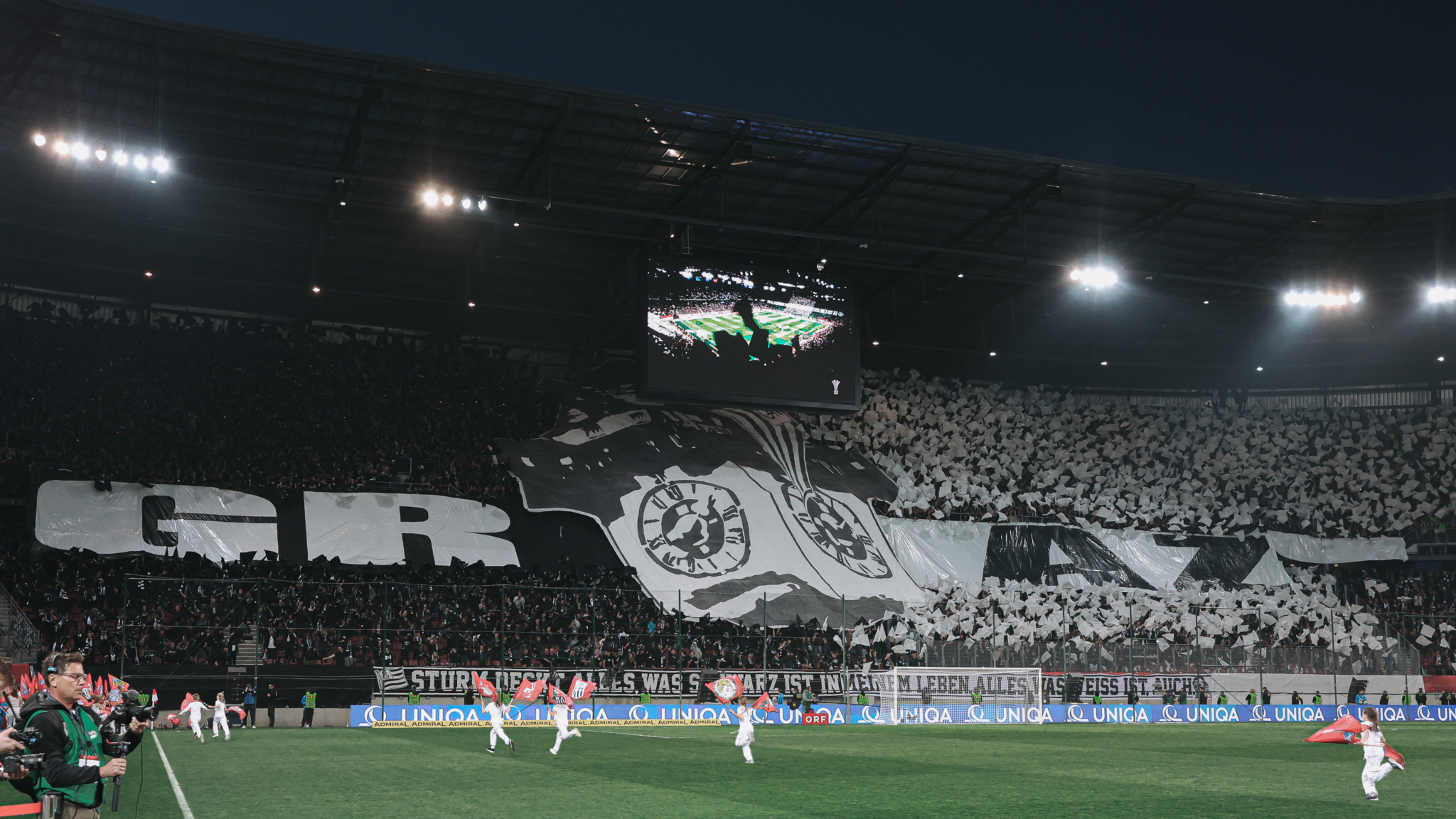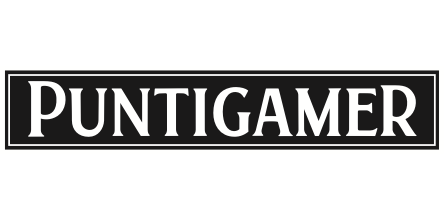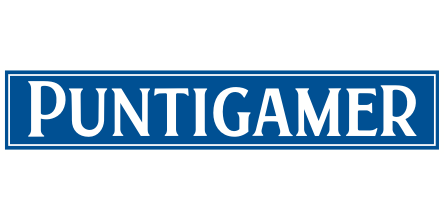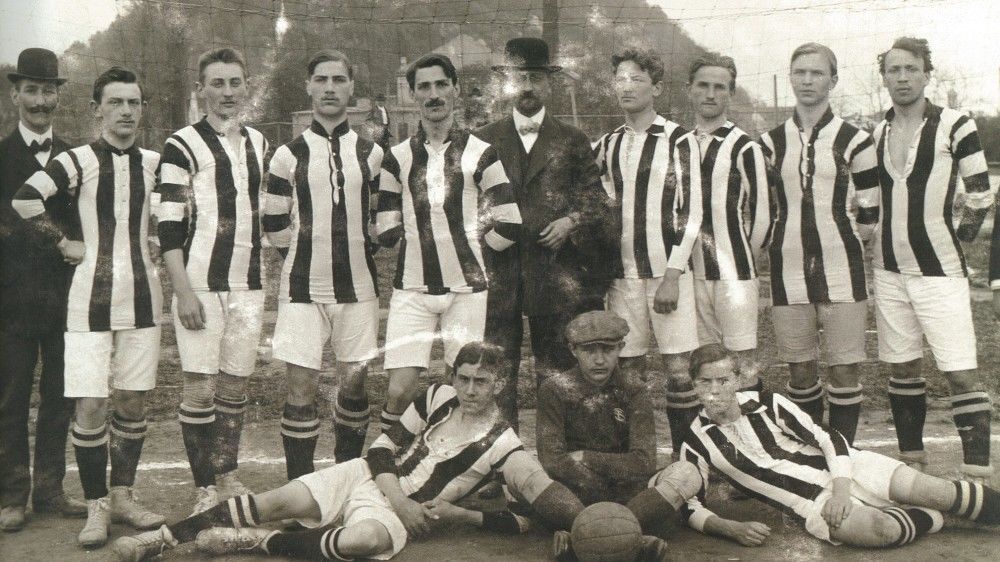1909 – 1934
The beginnings in the Augarten
The history of what is now known as Sportklub Sturm Graz, Styria's most successful soccer club, begins in the Augarten in Graz. Located in the city's sixth district on the River Mur, the public park is an El Dorado for schoolchildren and students in the first decade of the 20th century. Their passion is soccer - a fashionable sport that finds its way to Graz from England via Prague starting around 1893. Even before 1909, a gaggle of talented youngsters gather around the schoolboy Fritz Longin, who owns a leather ball, and the student Karl Aßmann. Under fantasy names such as "Assam del Negro" or "Longino", they are the most successful team in the Augarten Park. This is soon not enough for them and so they consolidate as a real soccer team on May 01, 1909 under the name "Sturm" - presumably modeled on the German ball club Sturm Prag, which makes a guest appearance in Graz shortly before. Shortly after its founding, the still distinctive Sturm flag with the "St" curved into it is the companion of the young club. The club colors are black and white.
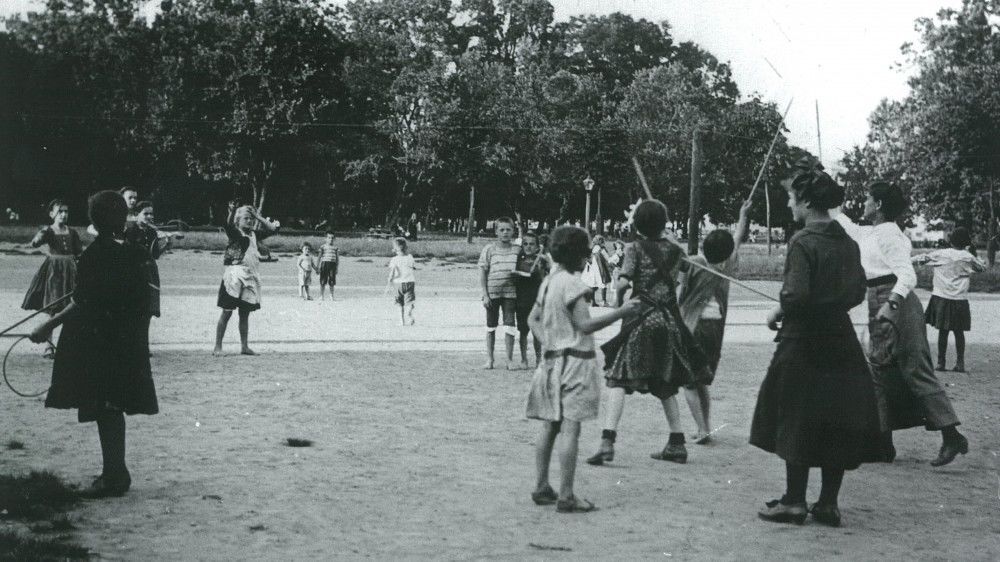
Sturm on the trotting track
Two more years pass until the club philosopher Arnold Schmidt pushes the foundation of the club according to the statutes due to the formation of the German-Alpine Football Association (which later becomes the Styrian Football Association) and on March 31, 1912 the "Grazer Fußballmannschaft Sturm" becomes the "Grazer Fußballklub Sturm". At the beginning of 1913, the DAFV announces the first championship of the 2nd class, which Sturm wins. The games are now no longer played in the Augarten, but as "subtenants" at the GSV-Platz within the Trabrennbahn, a facility located behind today's Stadthalle. During the First World War, Sturm is one of the few clubs able to maintain a limited playing schedule. After the end of the war, in November 1918, founding chairman Karl Aßmann calls for a new start in the Sturm Café Berghaus on the Radetzkybrücke.
The Gruabn as the first real home
As early as March 1919, a decade of nomadism finally came to an end when a meadow at the corner of Jakominigürtel and Klosterwiesgasse was leased and became the club's first permanent home: the "Sturm-Platz", later known as the "Gruabn", was initially a temporary solution that became a long-term home from 1921. The club name was also to change once again. After the inclusion of several sections, the "Fußballklub Sturm" becomes the "Grazer Sportklub Sturm" at the end of 1919. Soon after, the club celebrated its first great success. In the first official Styrian championship of the 1920/1921 season, Sturm came out on top.
The first supra-regional success comes in 1934, when the Austrian amateur state championship title is won by Othmar Oroszy, Edi Dellinger, Franz Krusic and Co. In the same year, for the 25th anniversary celebration under chairman Franz Reistenhofer, the expanded Sturm pitch with the wooden grandstand (which still exists today) is also opened, sponsored among others by the Graz businessmen Franz Öhler and the Reininghaus brothers.
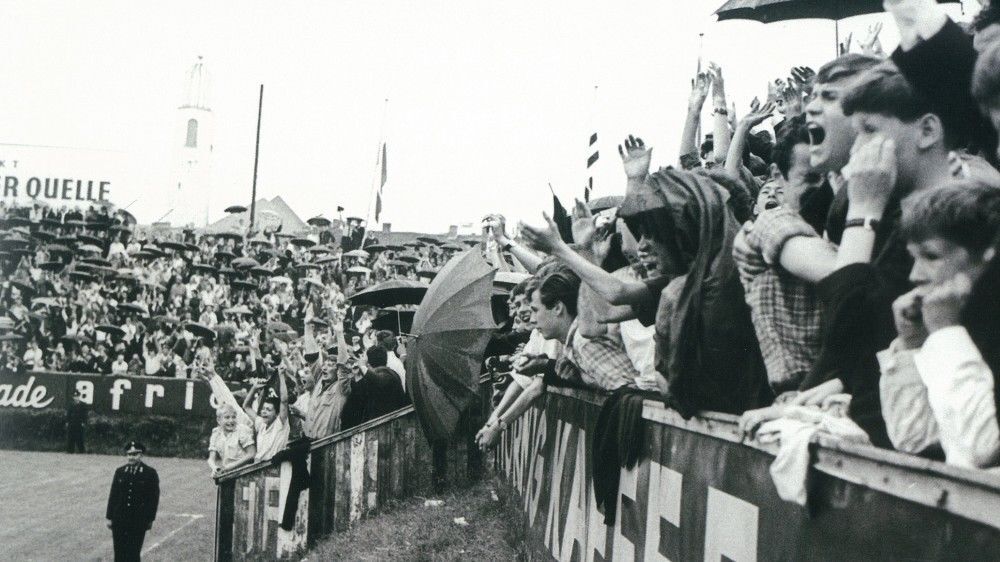
1934 – 1949
Storm in the Nazi era
As a result of its recent successes, Sturm, as a "provincial club," is now pushing more and more for the Vienna professional league to be opened up to an Austria-wide "state league." In 1936/37, Sturm narrowly fails to qualify for an "expanded" Vienna league against 1. Simmeringer SC and SC Helfort. As a consolation, they play for the first time since 1935 with teams from the capital for the Austrian Cup.
After the annexation of Austria to Hitler's Germany in March 1938, Sturm was also brought into line. The club comes to terms with the rulers during the Nazi era, a "club leader" loyal to the party runs it, and the youth must be run as a compulsory HJ (Hitler Youth) team. But on the second level, Sturm - as recent research proves - continues to be apolitical and unencumbered. In sporting terms, they would now at least have the chance to play in the "Gauliga" on a par with the Viennese clubs, but in the summer of 1938 the Graz Sportklub has the edge and is promoted there. The top Styrian clubs play with Carinthian clubs in the "Bezirksmeisterschaft Süd". From now on, the now "Ostmärker" are eligible to play in the German Tschammerpokal. In 1940, Sturm makes a name for itself there: Hans Gmeindl, Hans Schabus and Co. beat the big Viennese clubs WAC 7:3 and Admira sensationally 9:0, but against 1. FC Nuremberg it is the end of the line at Sturm-Platz after a 1:6 in front of more than 8,000 spectators. Sturm does manage to win promotion a short time later and is allowed to play with the Viennese clubs in the "Bereichsklasse" from 1941 to 1943, but all the mainstays are drafted into the Wehrmacht. The result was a sporting fiasco.
From reconstruction to the state league
After the end of the war in May 1945, thanks to Josef Plendner, Ernst Oswald and Leopold Krusic, as well as the good youth work during the war, Sturm quickly has an extremely strong team together again, which - strengthened with Viennese "legionnaires" - is able to win four national championships and cups from 1946 to 1949. Since then, Sturm has been the Styrian record champion and cup winner. But it takes until 1948 before Sturm finally arrives at the top level of Austrian soccer. First by reaching the ÖFB Cup final against Austria Wien (0:2 in front of around 38,000 in the Prater Stadium) and the following year with the new state league, in whose very first season in 1949/50 Sturm is one of the founding members.
1949 – 1966
Storm in the state league
Ludwig Durek, Max Lamot, Hans Gmeindl and Co. established themselves in the midfield in the first years of the Staatsliga, before the club was relegated to Staatsliga B for the first time in 1953/54. Although Sturm immediately achieves promotion again, it slides into a financial crisis. The financially more potent competition from the larger industrial cities became stronger and stronger, and the Viennese professionals still held a dominant position. At this time, Helmut Senekowitsch, who later became team manager, nevertheless became Sturm's first Austrian national player. But just before their 50th anniversary, the Black and Whites were relegated again.
Dreary years until the resurgence
For six years, Sturm had to make do with the Staatsliga B or the then restructured Regionalliga Mitte. Year after year, the Graz team played for the championship title for a long time, but at the end of the season, they only finished in last place. It was not until 1963/64 that Heli Wagner, Kurt Reisinger, Burli Wolf and Co. achieved the longed-for promotion. After three paternoster years, Sturm finally returned to the top flight in the summer of 1966. Since then, Sturm has been the only club outside Vienna to be represented in the top division without interruption.
1966 – 1974
European Cup for the first time
In November 1967, Gerd Springer from Carinthia takes over the coaching reins and introduces more professional structures in Graz. From 1968 to 1970, Sturm established itself at the top of the National League for the first time. The team around Damir Grloci, Robert Kaiser, Walter Peintinger, Fredl Murlasits, Heinz Ruß and Co. created a previously unknown soccer fever in Styria. The first international exclamation mark is made in the Messestadt Cup in the fall of 1970, when the English top club Arsenal FC is first defeated in Graz with 1:0 and in the second leg the elimination is only sealed by a disputed penalty in injury time. Sturm has established itself in the National League for the long term, even if there is still some adversity to overcome in the aftermath.
Dramatic relegation battles
The 1972/73 season turned out to be a crisis year in sporting terms, but the new Vienna coach Karl Schlechta managed to (supposedly) save the club. However, due to the foot-and-mouth epidemic in eastern Austria, matches of direct competitors were played only after the official end of the championship against listless opponents, and Vienna and SC Eisenstadt passed the Graz team after all. Thanks to the efforts of coach Schlechta, Hans Gert, Franz Gady and Karl Pühringer at the ÖFB, the league is increased to 17 clubs.
But already in the spring of 1974, the euphoria about this and about the strong start to the season fades. In April (!), the new ten-team Bundesliga is decided on as of the following season, and with it a five-year ranking in the fight for class preservation for the three Styrian representatives. Despite the fifth final rank, Sturm still fights for participation in the new Bundesliga until the last round and in the meantime even has to avert politically motivated merger fantasies of an "FC Steiermark". Nevertheless, SK Sturm succeeds in entering the new Bundesliga as a founding member.
1974 – 1984
European Cup honors and vice champion
With the momentum of qualifying for the new Bundesliga behind them, Sturm under Schlechta succeeds in reaching the second Cup final in the club's history (0:3 and 2:0 against champions Wacker Innsbruck). From now on, the Graz team only plays at the Bundesstadion Liebenau. Mandi Steiner, Hubert Kulmer, Kurt Stendal and Co. even advanced to the Cup Winners' Cup quarterfinals in the following season 1975/76, where they were defeated by Eintracht Frankfurt (0:2, 0:1) and eliminated Szombathelyi Haladás, among others, on the way there. Around 5,000 accompanying Sturm fans celebrate their advancement to the round of 16 in neighboring Hungary - still behind the Iron Curtain.
After two more excellent seasons led by coach Dr. Günther Paulitsch, the team fails to get going in the third year under the lawyer and is only brought out of the bottom of the table by Croatian Otto Barić. Coach Barić even managed a complete turnaround to the top of the table in his first full season in 1980/81. With Gernot Jurtin, Božo Bakota, Zvonko Breber and Co., the Black and Whites achieve an autumn championship title for the first time and lead the league until the last round. Then, however, the nerves fail in front of around 23,000 spectators in Graz-Liebenau. The runner-up title is nevertheless the greatest success in the club's history to date.
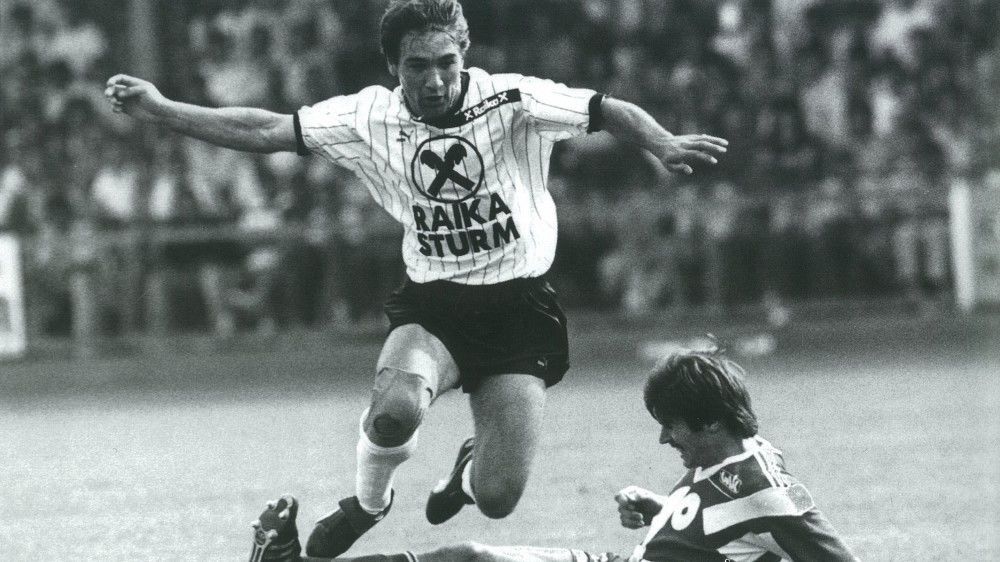
Gruabn return and UEFA CUP quarterfinals
When the Gruabn is revitalized in the fall of 1982, more than 11,000 spectators line the Sturm pitch and watch an unleashing 4:0 over SC Eisenstadt. Sturm also plays at the top for some time under Barić's successor Gernot Fraydl and has an unforgettable UEFA Cup season in 1983/84. After first eliminating Sportul Studențesc from Bucharest, the Graz club sensationally reaches a European Cup quarterfinal for the second time by advancing against Hellas Verona and Lokomotive Leipzig. There, against Nottingham Forest in Graz-Liebenau, Schwarz-Weiß levels the score at 0:1 from the first leg and only waits for the decisive penalty shootout in extra time before a disputed penalty puts the English in the semifinals.
1984 – 1994
Ups and downs despite investments
In 1988, Sturm reached third place under Walter Ludescher. With Jürgen Werner, Georg Zellhofer and Co., the club risks expensive transfers that throw it off track both athletically and financially. Even the return of Otto Barić could not prevent this. At the same time, Hannes Kartnig pushes into the club at the end of the 1980s until he is finally made the new president at the end of 1992 at the height of the sporting and financial crisis. Moreover, in 1992/93, after the basic round in the last year of the play-off system introduced in 1985, Sturm slips into the middle play-off before returning to the ten-team league and faces relegation.
Storm defies the abyss
In the spring of 1993, only a few hundred people strayed into the Gruabn. Even the new coach, Laco Jurkemik, was initially unable to turn the club around. After a derby debacle, only a miracle could save Sturm from the second division. Neo-manager Heinz Schilcher and Jurkemik revamped the squad during the season, brought in many young homegrown players with a view to the second division, and actually managed to pull off the miracle needed to stay in the league – then again on a full Sturm homeground.
1994 – 2002
With Osim to the first titles
In the summer of 1994, Schilcher and Kartnig achieved another miracle. They lured the last all-Yugoslavian team manager to Graz, partly because of the war in the former neighboring country. They also signed the Croatian creative player Ivica Vastić. With other talents such as Mario Haas, Arnold Wetl, Markus Schopp, Gilbert Prilasnig and Günther Neukirchner, Osim introduces a new playing culture to the Gruabn: instead of fighting, short passing is the new formula that slowly but surely brings Black and White to the top of Austrian soccer. In the very first season, 1994/95, Sturm under Osim was runner-up with the same number of points as champions Austria Salzburg, beaten only by the worse goal difference. The first national title in professional soccer follows just one season later: first, the team loses the championship to Rapid in the decisive direct duel of the last round, but after a 3:1 victory over Admira, SK Sturm is crowned cup winner. In 1996/97, the Cup victory was confirmed with another win against Vienna (2:1). At the end of the season, the supporters bid farewell to the Gruabn on May 31, 1997 after more than 78 years (3:0 against Rapid). In the future, only the amateurs play at Sturmplatz.
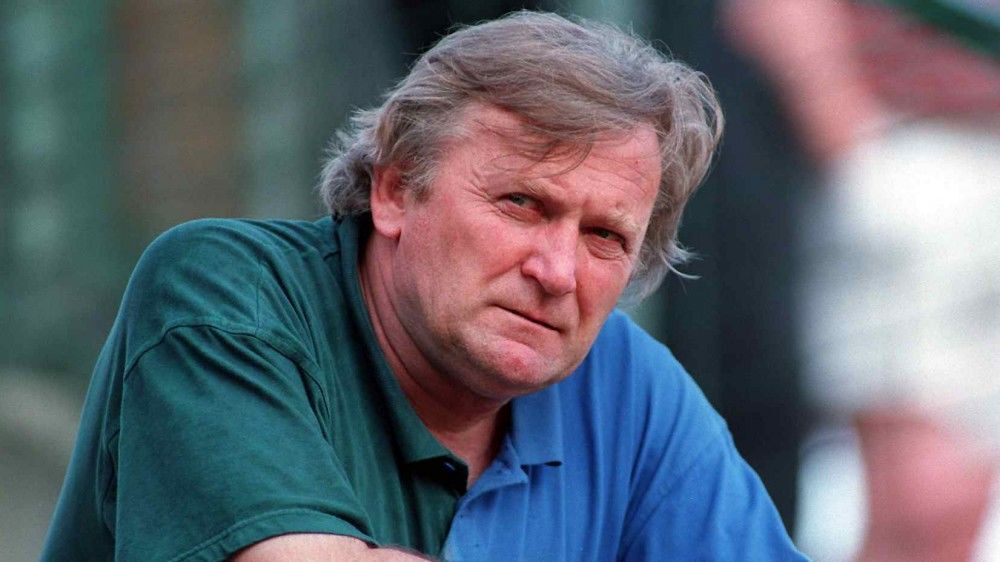
The master plate is finally in Graz
The move to the newly built Arnold Schwarzenegger Stadium, today's Merkur Arena, followed, where the first match of the 1997/98 season, the Graz derby, was won 4:0 - it was to be the start of a brilliant season. Thanks to the goals of the magic triangle Haas - Vastić - Reinmayr, Sturm became champions for the first time in the club's history - with a then record lead of 19 points over runners-up Rapid, fixing the title already seven rounds before the end. The double follows in the 1998/99 season in a dramatic season finale, in which Sturm first defeats LASK on penalties in the Cup final (1:1nV, 4: 2iE), wins the derby (of the century) in the penultimate round in injury time thanks to a goal by Jan-Pieter Martens (2:1) and on Haas' farewell to Strasbourg - for the then record sum of more than 50 million shillings - still fixes the championship title against FC Tirol (3:0).
Stormy in the Champions League
These successes are only trumped by the three-time series participation in the Champions League group stage from 1998/99 to 2000/01. While they paid empty money against Real Madrid, Inter, Olympique de Marseille or Manchester United, among others, in the first two seasons in the European top division, Sturm achieved the sensational group victory in the third year of participation - ahead of UEFA Cup winner Galatasaray and the national champions Rangers FC and AS Monaco. Schwarz-Weiß is among the best 16 teams in Europe and still has a chance to reach the quarter-finals in the intermediate round until the final matchday.
2002 – 2006
Relegation fight after Osim
In 2000/01, as a direct result of the Champions League euphoria, the team only finished fourth in the championship and, despite the expensive additions of Charles Amoah and Haas, failed to make a major international appearance. A radical and expensive reorganisation follows, which in 2001/02 brings another runner-up title and a Cup final. But in August 2002 Sturm fail to qualify for the Champions League against Maccabi Haifa and shortly afterwards coach Osim resigns after a 1:3 home defeat against FC Kärnten. His successors Franco Foda and Gilbert Gress are unable to match Osim's successes and in 2003/04 SK Sturm suddenly find themselves in the relegation battle. Mischa Petrović first manages to keep the Black and Whites out of the relegation zone in the last round (4:1 against SW Bregenz in front of 15,000 in Liebenau), then rejuvenates the team - the economic situation nevertheless comes to a head once again in the club's history.
Sale of Gruab and bankruptcy petition
For the 2005/06 season, the club is granted a licence to play in the Bundesliga for the first time only with conditions, although Kartnig even sells the leasing rights of the Gruabn to the city beforehand. Franco Foda is given a second chance as head coach and by August 2006 it is clear that only a bankruptcy petition with compulsory composition would save the club from the crushing burden of debt. On 23 October 2006 Sturm filed for bankruptcy, and on 2 November Kartnig handed over the presidency to veteran Hans Fedl after 14 years.
2006 – 2012
Salvation and resurrection
In the late autumn of 2006, a group of patrons led by Fedl, Hans Rinner and Christian Jauk succeeded in getting Dr. Norbert Scherbaum, the administrator in bankruptcy, to take over the continuation of the game. A negotiation thriller ensued which, thanks to the group of patrons and the three investors Raiffeisen, Grazer Wechselseitige and Styria Medien AG won over by Jauk, came to a positive end with the successful compulsory settlement on 25 January 2007 and a new management team around President Rinner and CFO Jauk. In spring 2007, Sturm managed to stay in the league despite losing 13 points. And already in the 2007/08 season Sturm secured the title of autumn champions again, finishing fourth - they had rehabilitated themselves both sportingly and economically. This was also due to the excellent work of the Sturm youth team, which trained talents such as Sebastian Prödl, Christoph Leitgeb, Jürgen Säumel, Jakob Jantscher and Daniel Beichler.
25,000 Sturm fans in Klagenfurt and the third championship title
The 2008/09 season is a jubilee year - the club celebrates its centenary by finishing fourth and sensationally reaching the group stage of the newly created UEFA Europa League. Attendance figures reached their highest level since 1998, Sturm was restructured, the instalments to the investors were paid back by the end of 2009 and the Messendorf training centre was rebuilt and modernised. With the economic security as a basis, Franco Foda and his team can return to the glorious times of the Osim era in 2010. In front of 25,000 Sturm fans in Klagenfurt's Wörthersee Stadium, a goal by Klemen Lavrić secures the Cup victory against Wiener Neustadt. The first title in eleven years is a reality.
Only one year later, the unexpected potentiation of this success follows. In a tight season, Franco Foda's team improved from game to game, especially in the spring, and made the impossible possible: Sturm Graz won the third championship title in the club's history. Only a few weeks after the triumph, however, they fail in the Champions League play-off against the Belarusian champions BATE Borisov (1:1 and 0:2). In the Europa League group phase, the team at least managed to win, but in the championship things did not go according to plan. While Franco Foda announces his departure in the summer, the club reorganises itself.
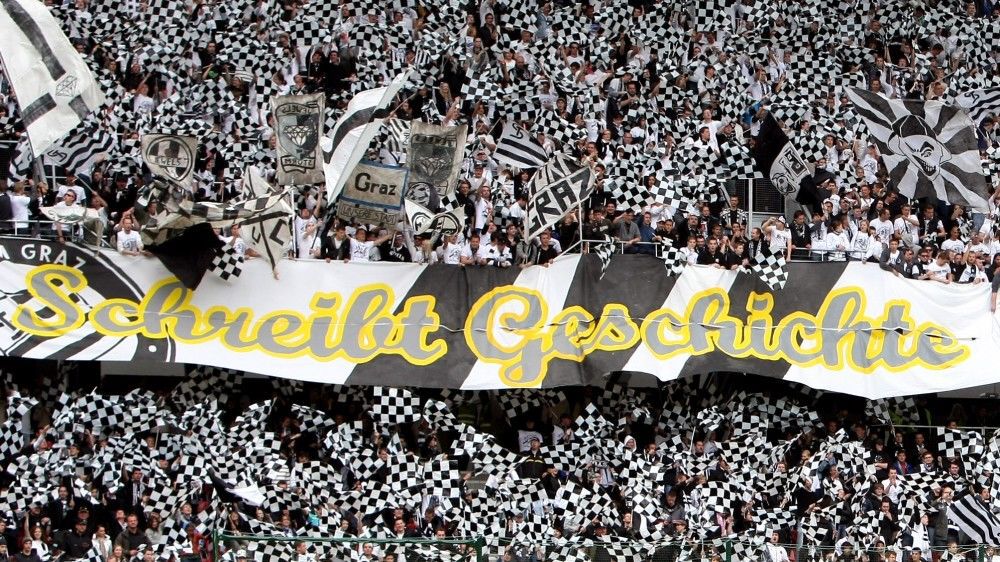
2012 – today
Professional structures for new times
As early as 2011, Sportklub Sturm initiated a women's football section. In the first few years as a team with FC Stattegg, the club was soon promoted to the Bundesliga, where it won the runner-up title four times and reached a cup final by 2022.
The structure of the men's club changed - from then on, the club was run by a business manager and a sporting manager, and in the meantime there was even a superior general manager, with Thomas Tebbich and Günther Kreissl bringing continuity in this area. And it was only with this continuity that sporting success returned to the Graz club.
Away from the day-to-day business, Sturm installed a legend club in 2017 and got involved in the citizens' initiative to save the Gruabn, which was even listed as a historic monument in 2021 and whose wooden stand was renovated.
David conquers Goliath
In a brilliant 2017/18 season, Schwarz-Weiß initially achieve the autumn championship title, but lose coach Franco Foda to the ÖFB in his third term in Graz. His successor Heiko Vogel changes the style of play, which leads to Sturm only really getting going after a few transitional weeks under the German. In the cup final on 9 May 2018, Sturm will face league leaders FC RedBull Salzburg. David-Sturm defies Goliath-Salzburg and strikes in extra time through golden goal scorer Stefan Hierländer. It is the fifth Cup victory for the Graz team. Shortly afterwards, SK Sturm also secured the runner-up spot in the championship.
Return to Europe
In 2020 - in the midst of the Covid 19 pandemic - Andreas Schicker takes over as sporting director and installs Christian Ilzer a little later in a situation that is tense both sportingly and economically. Together, Schicker and Ilzer pursue a three-year plan that already bears fruit in the first season: third place and the first fixed qualification for a European group stage after a ten-year break are the result of the hard work. At the beginning of the 2021/22 season, the club even managed to make it into the Europa League and, at the end of the season, won the championship for the seventh time in the club's history. In the 2022/23 season, Sturm entered the group stage of the Europa League for the second time in a row and earned eight points. Particularly bitter was the fact that the team was eliminated from the European Cup as the last team in the group. Never before had a team finished last in the table with eight points. The curiosity: Group winners Feyenoord had the same number of points.
